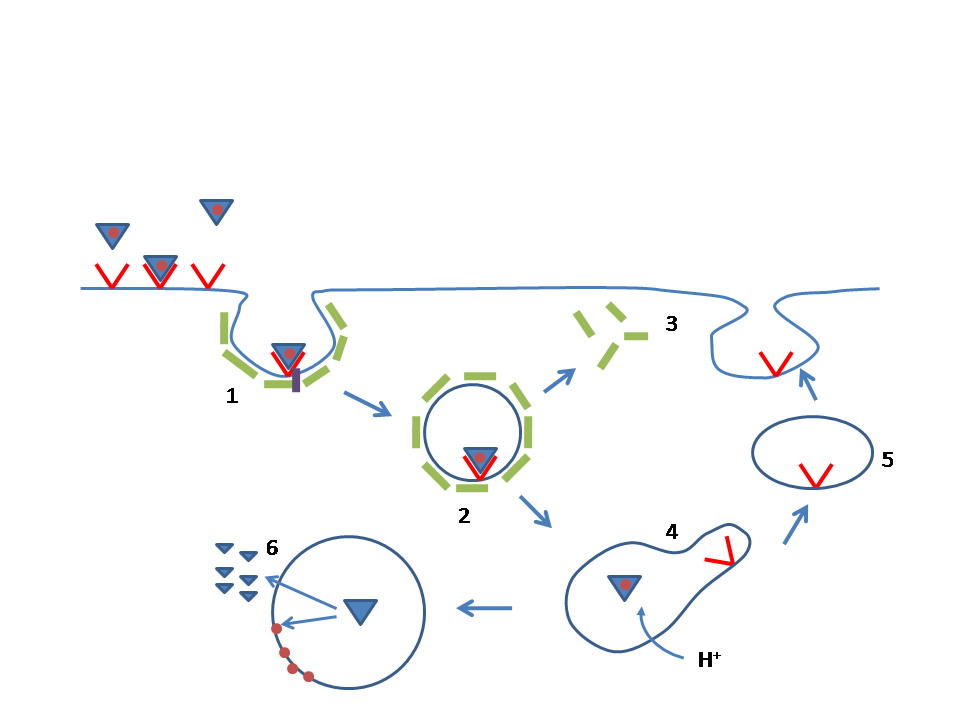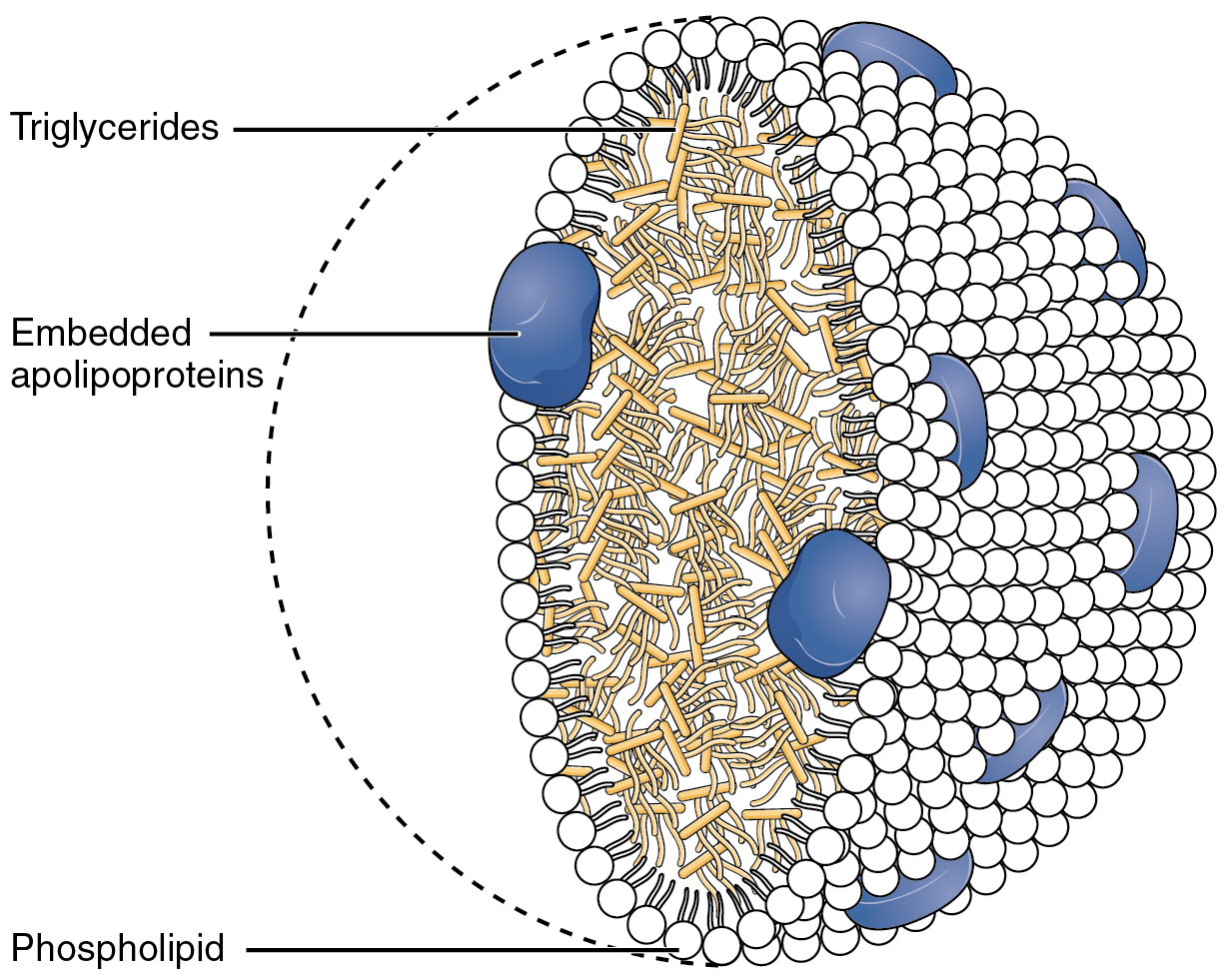|
Dyslipidaemia
Dyslipidemia is an abnormal amount of lipids (e.g. triglycerides, cholesterol and/or fat phospholipids) in the blood. Dyslipidemia is a risk factor for the development of atherosclerotic cardiovascular disease ( ASCVD). ASCVD includes coronary artery disease, cerebrovascular disease, and peripheral artery disease. Although dyslipidemia is a risk factor for ASCVD, abnormal levels don't mean that lipid lowering agents need to be started. Other factors, such as comorbid conditions and lifestyle in addition to dyslipidemia, is considered in a cardiovascular risk assessment. In developed countries, most dyslipidemias are hyperlipidemias; that is, an elevation of lipids in the blood. This is often due to diet and lifestyle. Prolonged elevation of insulin resistance can also lead to dyslipidemia. Likewise, increased levels of O-GlcNAc transferase (OGT) may cause dyslipidemia. Types Diagnosis Classification Physicians and basic researchers classify dyslipidemias in two distinct ways ... [...More Info...] [...Related Items...] OR: [Wikipedia] [Google] [Baidu] |
Familial Hypercholesterolemia
Familial hypercholesterolemia (FH) is a genetic disorder characterized by high cholesterol levels, specifically very high levels of low-density lipoprotein (LDL cholesterol), in the blood and early cardiovascular disease. The most common mutations diminish the number of functional LDL receptors in the liver. Since the underlying body biochemistry is slightly different in individuals with FH, their high cholesterol levels are less responsive to the kinds of cholesterol control methods which are usually more effective in people without FH (such as dietary modification and statin tablets). Nevertheless, treatment (including higher statin doses) is usually effective. FH is classified as a type 2 familial dyslipidemia. There are five types of familial dyslipidemia (not including subtypes), and each are classified from both the altered lipid profile and by the genetic abnormality. For example, high LDL (often due to LDL receptor defect) is type 2. Others include defects in chylomicron ... [...More Info...] [...Related Items...] OR: [Wikipedia] [Google] [Baidu] |
Cholesterol
Cholesterol is any of a class of certain organic molecules called lipids. It is a sterol (or modified steroid), a type of lipid. Cholesterol is biosynthesized by all animal cells and is an essential structural component of animal cell membranes. When chemically isolated, it is a yellowish crystalline solid. Cholesterol also serves as a precursor for the biosynthesis of steroid hormones, bile acid and vitamin D. Cholesterol is the principal sterol synthesized by all animals. In vertebrates, hepatic cells typically produce the greatest amounts. It is absent among prokaryotes (bacteria and archaea), although there are some exceptions, such as '' Mycoplasma'', which require cholesterol for growth. François Poulletier de la Salle first identified cholesterol in solid form in gallstones in 1769. However, it was not until 1815 that chemist Michel Eugène Chevreul named the compound "cholesterine". Etymology The word "cholesterol" comes from the Ancient Greek ''chole-'' ... [...More Info...] [...Related Items...] OR: [Wikipedia] [Google] [Baidu] |
Chromosome 19
Chromosome 19 is one of the 23 pairs of chromosomes in humans. People normally have two copies of this chromosome. Chromosome 19 spans more than 58.6 million base pairs, the building material of DNA. It is considered the most gene-rich chromosome containing roughly 1,500 genes, despite accounting for only 2 percent of the human genome. Genes Number of genes The following are some of the gene count estimates of human chromosome 19. Because researchers use different approaches to genome annotation, their predictions of the number of genes on each chromosome varies (for technical details, see gene prediction). Among various projects, the collaborative consensus coding sequence project ( CCDS) takes an extremely conservative strategy. So CCDS's gene number prediction represents a lower bound on the total number of human protein-coding genes. Gene list The following is a partial list of genes on human chromosome 19. For complete list, see the link in the infobox on the right. ... [...More Info...] [...Related Items...] OR: [Wikipedia] [Google] [Baidu] |
High Density Lipoprotein
High-density lipoprotein (HDL) is one of the five major groups of lipoproteins. Lipoproteins are complex particles composed of multiple proteins which transport all fat molecules (lipids) around the body within the water outside cells. They are typically composed of 80–100 proteins per particle (organized by one, two or three ApoA. HDL particles enlarge while circulating in the blood, aggregating more fat molecules) and transporting up to hundreds of fat molecules per particle. Overview Lipoproteins are divided into five subgroups, by density/size (an inverse relationship), which also correlates with function and incidence of cardiovascular events. Unlike the larger lipoprotein particles, which deliver fat molecules to cells, HDL particles remove fat molecules from cells. The lipids carried include cholesterol, phospholipids, and triglycerides, amounts of each are variable. Increasing concentrations of HDL particles are associated with decreasing accumulation of atherosclerosis ... [...More Info...] [...Related Items...] OR: [Wikipedia] [Google] [Baidu] |
Tangier Disease
Tangier disease or hypoalphalipoproteinemia is an extremely rare inherited disorder characterized by a severe reduction in the amount of high density lipoprotein (HDL), often referred to as "good cholesterol", in the bloodstream. Worldwide, approximately 100 cases have even been identified. The disorder was originally discovered on Tangier Island off the coast of Virginia, but has now been identified in people from many different countries. Signs and symptoms Individuals that are homozygotes for Tangier's disease develop various cholesterol ester depositions. These are especially visible in the tonsils, as they may appear yellow/orange. The cholesterol esters may also be found in lymph nodes, bone marrow, the liver and spleen. Due to the cholesterol ester depositions the tonsils may be enlarged. Hepatosplenomegaly (enlarged liver and spleen) is common. Neuropathy and cardiovascular disease are the most devastating developments caused by Tangier's disease.Serfaty-Lacrosnier ... [...More Info...] [...Related Items...] OR: [Wikipedia] [Google] [Baidu] |
Abetalipoproteinemia
Abetalipoproteinemia (also known as: Bassen-Kornzweig syndrome, microsomal triglyceride transfer protein deficiency disease, MTP deficiency, and betalipoprotein deficiency syndrome) is a disorder that interferes with the normal absorption of fat and fat-soluble vitamins from food. It is caused by a mutation in microsomal triglyceride transfer protein resulting in deficiencies in the apolipoproteins B-48 and B-100, which are used in the synthesis and exportation of chylomicrons and VLDL respectively. It is not to be confused with familial dysbetalipoproteinemia. It is a rare autosomal recessive disorder. Presentation Symptoms Often symptoms will arise that indicate the body is not absorbing or making the lipoproteins that it needs. These symptoms usually appear ''en masse''. These symptoms come as follows: * Failure to thrive (i.e. failure to grow in infancy) * Steatorrhea (i.e. fatty, pale stools) * Frothy stools * Foul smelling stools * Protruding abdomen * Intellectual dis ... [...More Info...] [...Related Items...] OR: [Wikipedia] [Google] [Baidu] |
Hypolipoproteinemia
Hypolipoproteinemia, hypolipidemia, or hypolipidaemia (British English) is a form of dyslipidemia that is defined by abnormally lowered levels of any or all lipids and/or lipoproteins in the blood. It occurs through genetic disease (namely, hypoalphalipoproteinemia and hypobetalipoproteinemia), malnutrition, malabsorption, wasting disease, cancer, hyperthyroidism, and liver disease. Causes Causes of hypolipidemia include: *Hypobetalipoproteinemia (low levels of LDL cholesterol or apolipoprotein B) *Malnutrition *Malabsorption *Wasting disease * Certain cancers *Hyperthyroidism (an overactive thyroid) *Liver disease Diagnosis It can be diagnosed via blood study that identifies fat particles. The patient must fast overnight to prevent interference from fat in the blood due to food intake. The criteria for this (without the involvement of cholesterol-lowering drugs) are total cholesterol levels below 120 mg/dL and LDL cholesterol levels under 50 mg/dL. Critical illness I ... [...More Info...] [...Related Items...] OR: [Wikipedia] [Google] [Baidu] |
Chylomicrons
Chylomicrons (from the Greek χυλός, chylos, meaning ''juice'' (of plants or animals), and micron, meaning ''small particle''), also known as ultra low-density lipoproteins (ULDL), are lipoprotein particles that consist of triglycerides (85–92%), phospholipids (6–12%), cholesterol (1–3%), and proteins (1–2%). They transport dietary lipids from the intestines to other locations in the body. ULDLs are one of the five major groups of lipoproteins (sorted by density) that enable fats and cholesterol to move within the water-based solution of the bloodstream. A protein specific to chylomicrons is ApoB48. There is an inverse relationship in the density and size of lipoprotein particles: fats have a lower density than water or smaller protein molecules, and the larger particles have a higher ratio of internal fat molecules with respect to the outer emulsifying protein molecules in the shell. ULDLs, if in the region of 1,000 nm or more, are the only lipoprotein parti ... [...More Info...] [...Related Items...] OR: [Wikipedia] [Google] [Baidu] |
Low-density Lipoprotein
Low-density lipoprotein (LDL) is one of the five major groups of lipoprotein that transport all fat molecules around the body in extracellular water. These groups, from least dense to most dense, are chylomicrons (aka ULDL by the overall density naming convention), very low-density lipoprotein (VLDL), intermediate-density lipoprotein (IDL), low-density lipoprotein (LDL) and high-density lipoprotein (HDL). LDL delivers fat molecules to cells. LDL is involved in atherosclerosis, a process in which it is oxidized within the walls of arteries. Overview Lipoproteins transfer lipids (fats) around the body in the extracellular fluid, making fats available to body cells for receptor-mediated endocytosis. Lipoproteins are complex particles composed of multiple proteins, typically 80–100 proteins per particle (organized by a single apolipoprotein B for LDL and the larger particles). A single LDL particle is about 220–275 angstroms in diameter, typically transporting 3,000 to 6,000 fa ... [...More Info...] [...Related Items...] OR: [Wikipedia] [Google] [Baidu] |
Lipoproteins
A lipoprotein is a biochemical assembly whose primary function is to transport hydrophobic lipid (also known as fat) molecules in water, as in blood plasma or other extracellular fluids. They consist of a triglyceride and cholesterol center, surrounded by a phospholipid outer shell, with the hydrophilic portions oriented outward toward the surrounding water and lipophilic portions oriented inward toward the lipid center. A special kind of protein, called apolipoprotein, is embedded in the outer shell, both stabilising the complex and giving it a functional identity that determines its role. Many enzymes, transporters, structural proteins, antigens, adhesins, and toxins are lipoproteins. Examples include plasma lipoprotein particles ( HDL, LDL, IDL, VLDL and chylomicrons). Subgroups of these plasma particles are primary drivers or modulators of atherosclerosis. Scope Transmembrane lipoproteins Some transmembrane proteolipids, especially those found in bacteria, are referred t ... [...More Info...] [...Related Items...] OR: [Wikipedia] [Google] [Baidu] |
Lipoprotein
A lipoprotein is a biochemical assembly whose primary function is to transport hydrophobic lipid (also known as fat) molecules in water, as in blood plasma or other extracellular fluids. They consist of a triglyceride and cholesterol center, surrounded by a phospholipid outer shell, with the hydrophilic portions oriented outward toward the surrounding water and lipophilic portions oriented inward toward the lipid center. A special kind of protein, called apolipoprotein, is embedded in the outer shell, both stabilising the complex and giving it a functional identity that determines its role. Many enzymes, transporters, structural proteins, antigens, adhesins, and toxins are lipoproteins. Examples include plasma lipoprotein particles ( HDL, LDL, IDL, VLDL and chylomicrons). Subgroups of these plasma particles are primary drivers or modulators of atherosclerosis. Scope Transmembrane lipoproteins Some transmembrane proteolipids, especially those found in bacteria, are referred ... [...More Info...] [...Related Items...] OR: [Wikipedia] [Google] [Baidu] |
Hypocholesterolemia
Hypocholesterolemia is the presence of abnormally low (''hypo-'') levels of cholesterol in the blood (''-emia''). A defect in the body's production of cholesterol can lead to adverse consequences as well. Cholesterol is an essential component of mammalian cell membranes and is required to establish proper membrane permeability and fluidity. It is not clear if a lower than average cholesterol level is directly harmful; however, it is often encountered in particular illnesses. Presentation Role in disease With the increased use of medication to suppress cholesterol, some have expressed concern that lowering cholesterol levels excessively will itself cause disease. Specific disease entities Demographic studies suggest that cholesterol levels form a U-shape curve when plotted against mortality; this suggests that low cholesterol is associated with increased mortality, mainly due to depression, cancer, hemorrhagic stroke, aortic dissection and respiratory diseases. It is possible that ... [...More Info...] [...Related Items...] OR: [Wikipedia] [Google] [Baidu] |






